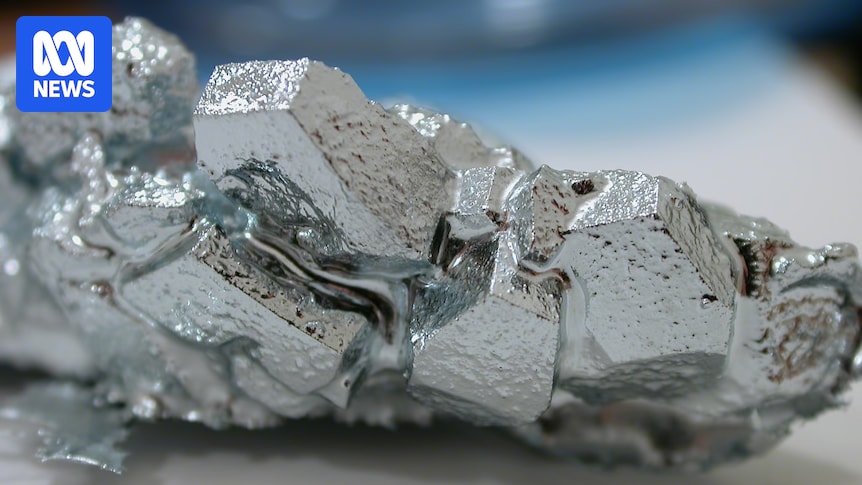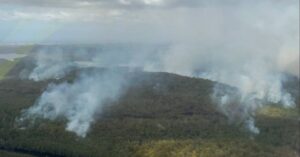
Australia’s critical minerals industry has broadly welcomed a significant rare earths agreement between the United States and Australia, a move that analysts believe will bolster the rare earths supply chain outside of China. The deal, announced this week, will see both nations invest at least $US1 billion each over the next six months to unlock an $US8.5 billion pipeline of critical mineral projects, aiming to reduce China’s global dominance in the sector.
The Minerals Council of Australia praised the US-Australia Critical Minerals Framework, emphasizing its potential to encourage greater investment in Australian mining and processing. “This is an acknowledgement of Australia’s strategically important role in the development of new technologies, defense capabilities, and renewable energy infrastructure,” said CEO Tania Constable. She highlighted Australia’s readiness to meet the growing demands of partners in Asia, the US, and Europe, noting the urgent need for investment to unlock the next chapter of prosperity in critical minerals.
Market Reactions and Stock Volatility
Following the announcement, critical minerals stocks experienced significant volatility. The Australian share market saw a surge on Tuesday morning, led by companies earmarked for further investment, such as Alcoa and Arafura Rare Earths. However, by the close of trade, profit-taking led to a mixed finish. Alcoa Corp surged 7.49% to $59.68, while Lynas Rare Earths fell 7.56% to $18.96. Other companies like South32, Pilbara Minerals, BHP, and Mineral Resources saw gains, contributing to a record high for the ASX200 Materials sector.
Analysts at UBS described the framework as a “landmark” initiative that paves the way for a re-emergent rare-earths supply chain outside China. However, they noted a lack of detail in the announcements, with “project specifics so far elusive.”
Strategic Projects and International Cooperation
The agreement prioritizes two strategically significant projects: the Alcoa-Sojitz project in Western Australia and Arafura’s Nolan project in the Northern Territory. The planned gallium plant, a joint venture between Alcoa and a Japanese firm, will receive up to $US200 million from the Australian government, along with additional funding from the US. Japan will finance Sojitz Corporation’s half of the project, which aims to supply up to 10% of the world’s gallium, a critical component for semiconductors and advanced defense technologies.
William Oplinger, Alcoa’s CEO, welcomed the opportunity to support both nations in developing a new source of gallium. “The investment support from the US and Australian governments underscores Alcoa’s role in supporting the development of the critical mineral supply chain,” he stated.
Arafura Rare Earths announced it received conditional approval for an equity investment of up to $US100 million from the Australian government, with the US considering up to $US300 million in financial support. The project is expected to produce 5% of global rare earths once operational.
Challenges and Future Prospects
Despite the substantial financial commitments, experts warn that further efforts are needed to develop the market for Australian minerals by investing across the supply chain. Economic geographer Lian Sinclair from the University of Sydney emphasized the need for investment in refineries and magnet production in allied countries to avoid reliance on Chinese industry.
Without investment in refineries and magnet production in allied countries, Australian miners will continue to either sell into or be outcompeted by Chinese domestic industry,” Dr. Sinclair said.
At the White House, the US President humorously suggested that the influx of critical minerals would lead to an oversupply, quipping, “about a year from now you’ll have so much critical minerals and rare earths you won’t know what to do with them.” However, UBS analysts flagged the one-year timeline as unrealistic, noting that typical project timelines suggest a longer period.
Dr. Sinclair also criticized the Australian government for insufficient planning regarding the environmental, social, and cultural impacts of domestic rare earth mineral production. As the industry moves forward, balancing economic ambitions with sustainable practices will be crucial.
The US-Australia rare earths deal marks a significant step in diversifying global supply chains and reducing dependence on China. However, as the projects progress, stakeholders will need to address the complexities of market development and environmental responsibility to realize the full potential of this strategic partnership.






